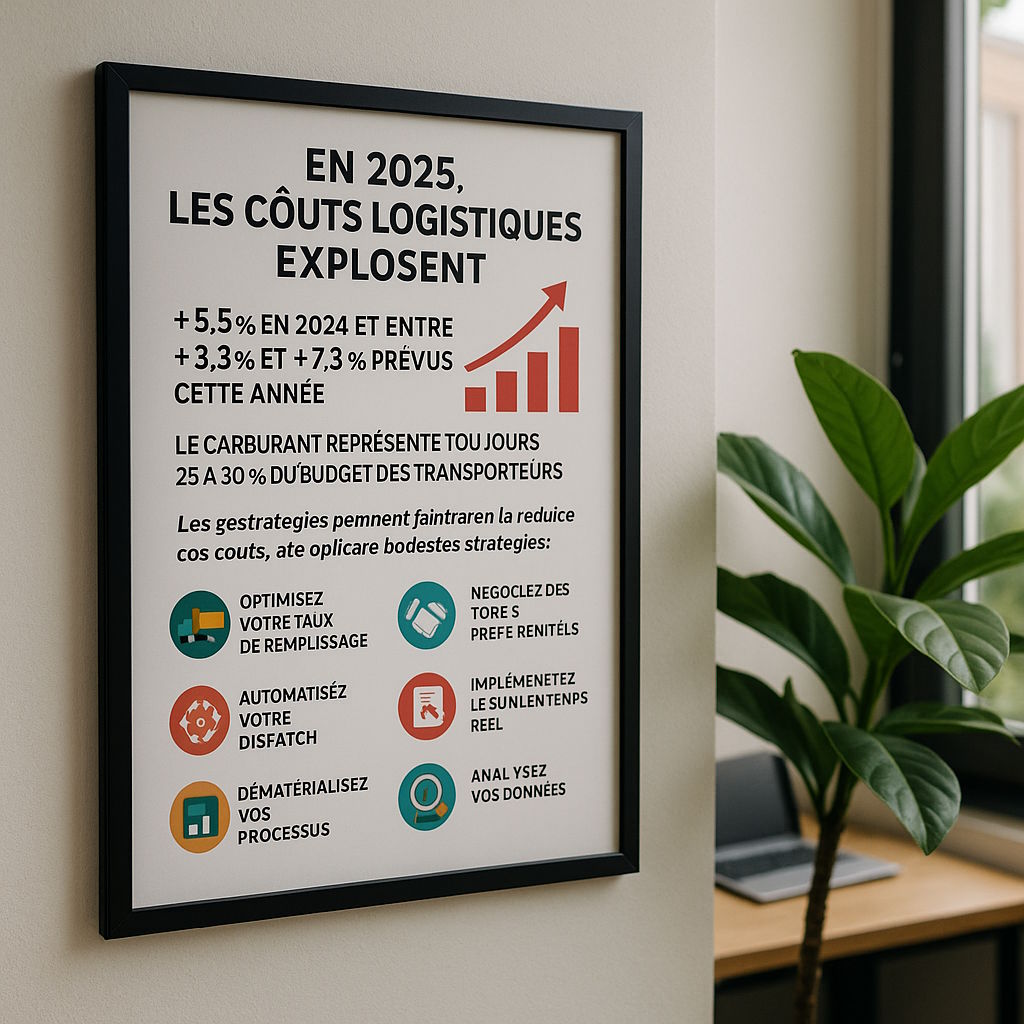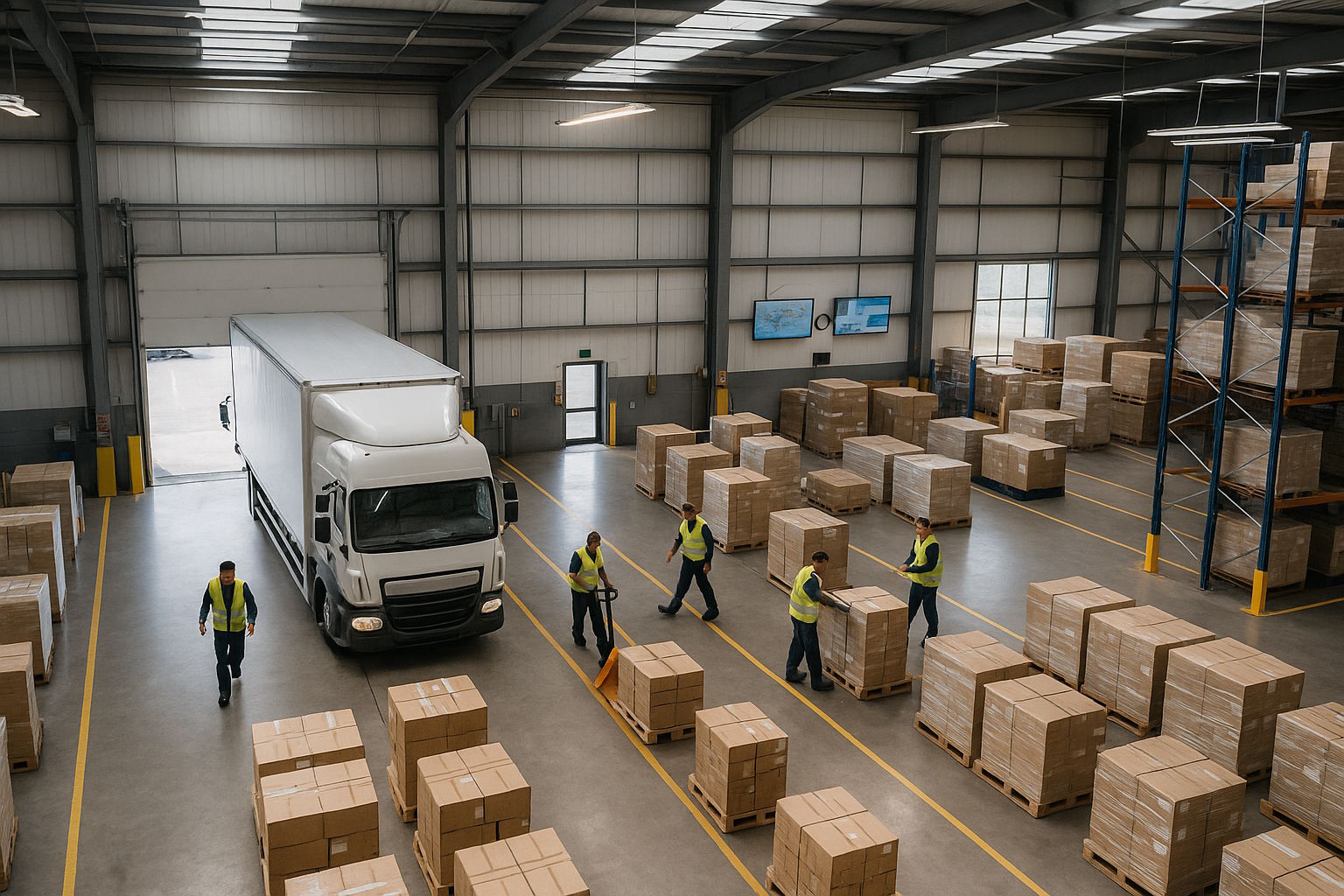How to Cut Logistics Costs in 2025: 7 Proven Strategies

In 2025, logistics is in turmoil: costs are soaring (+5.5% in 2024, +3.3 to 7.3% expected this year), fuel accounts for 25 to 30% of the budget, and the driver shortage is pushing wages up. Yet some companies are not suffering from this tsunami-they’re using it as a springboard to cut costs by up to 30%. Let’s uncover their secret recipe.
Take the bull by the horns… or fill the truck to the brim
Imagine a truck driving half-empty: every kilometer traveled is money wasted. By optimizing the load rate, you can drastically reduce the number of trips, fuel consumption, and even paid driver hours. In other words, smart loading means winning from the start.
In practice, this involves algorithms that automatically calculate the best arrangement, smart delivery grouping, and the use of a TMS (Transport Management System) capable of 3D optimization. The result? A 15 to 20% leap in transport savings.
Renegotiate differently
Volume alone is no longer enough. Carriers want predictability and reliability. A good partnership is based on:
-
Long-term visibility: planned volumes, predictable seasonality.
-
Well-oiled logistics: controlled lead times, clear processes.
-
A lasting relationship: exclusivity on certain routes, multi-year contracts.
Add performance-based pricing for punctuality, penalties for delays, and you can achieve 5 to 15% savings on rates and protective clauses against increases.
Make technology your ally
No more random dispatching-do it smartly. Automation is a game-changer here. No more errors or late reassignments: your TMS assigns the right driver to the right route in just a few clicks.
The result: 30% fewer empty kilometers, huge time savings on administrative tasks, and improved customer performance. And it’s all possible thanks to AI that considers distance, capacity, deadlines… and reacts in real time to unexpected events.
See clearly in real time
In the past, you reacted to incidents. Now, you anticipate them. Thanks to GPS, IoT sensors, and predictive intelligence, every potentially costly issue is flagged before it escalates: delays, detours, customer alerts.
The numbers speak for themselves: 25% fewer delivery failures, 30% more on-time deliveries, and a 40% drop in customer service calls. Operational fluidity becomes a true competitive edge.
Invoice… right away
In logistics, cash flow is king. A one-day delay in invoicing is one day of lost income. With digitization, you eliminate paper, reentries, and gain in efficiency:
-
delivery notes instantly digitized,
-
electronic signatures,
-
automatic invoicing as soon as the final step is completed.
The result? Fewer disputes, more available cash, and stronger cash flow.
Read your data like an open book
You have goldmines of savings right before your eyes. Your logistics data reveals inefficient routes, underused drivers, and contracts that need immediate renegotiation.
A good BI (Business Intelligence) dashboard or analytics engine goes even further: it identifies anomalies, predicts peaks, and suggests adjustments. Reorganizing a route in under an hour? It’s possible.
Share to move forward
Why ship alone when you can pool? Multiple compatible companies, multiple shipments, one full truck-and massive savings.
Through geographic grouping, non-competing partnerships, or collaborative platforms, costs can be reduced by up to 40%. The algorithm handles it all: synergies, shared billing, planning.
How do you implement all this?
Here’s a realistic and effective 3-phase plan:
| Phase | Main actions |
|---|---|
| 1 – Quick wins (months 1-2) | Cost audit, load optimization, urgent contract renegotiations |
| 2 – Structuring (months 3-6) | Selecting a suitable TMS, dispatch automation, document digitization |
| 3 – Continuous optimization (months 6-12) | Data analysis, progressive adjustments, launching pooling |
A modern TMS becomes the conductor of all these actions: dispatching, invoicing, tracking, analytics. ROI is generally noticeable after just a few months.
What now?
The question is no longer “if” you should optimize your logistics, but “how fast” you’ll do it. Every month of delay is a mountain of savings gone-and a competitive edge your rivals might seize.
The cost crisis is real-but it becomes a powerful lever if you dare to act now. Ready to turn this crisis into opportunity? Now’s the time to get ahead!




